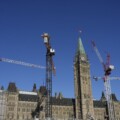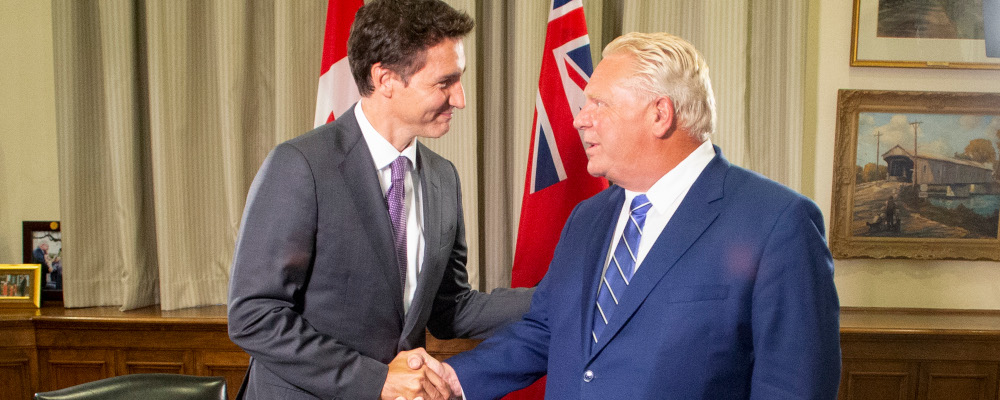Canada’s equalization program has a long history, and is not without its critics. It’s been controversial right from the start.
The reason is simple: unlike the two other major federal transfers for health and social programs, equalization provides more (per person) to some provinces than others. And several receive nothing at all. The gap between “have” and “have not” provinces often leads to conflict.
Of course, such tensions are natural—and almost unavoidable—in a large and diverse country like Canada. And while equalization often serves as a whipping boy for other unrelated concerns, especially in Alberta, a common complaint is that some recipient provinces are either undeserving or receive too much.
The latest payments for the upcoming 2023/24 fiscal year may further inflame this particular concern for one simple reason: Ontario will receive a $421 million equalization payment, despite not really qualifying. I’ll explain.
First, a quick summary of how it all works.
Since some provinces have weaker economies than others, they have a harder time raising revenues. If all provinces had tax rates and structures set to the national average, for example, Alberta would raise nearly $14,000 per person while New Brunswick and Prince Edward Island would raise roughly $7,700.These and all calculations in this article are my own and correspond to the fiscal year for which the latest possible data is available.
To ensure that provinces have the capability to deliver reasonable public services without having to resort to abnormal tax rates, the federal government provides top-up payments to any provinces with below-average “fiscal capacity” to bring them up to the national average.
You have to squint to see Ontario’s amount in that graph. But it’s there. Here are the totals:
- Quebec: $14 billion
- Manitoba: $3.5 billion
- Nova Scotia: $2.8 billion
- New Brunswick: $2.6 billion
- Prince Edward Island: $561 million
- Ontario: $421 million
One of these provinces is not like the others.
Ontario’s fiscal capacity is between 3.5 and 6.4 percent above the national average in the calculation for 2023/24, depending on whether resource revenues are partially included or not.
So why does a “have” province receive a payment?
Simply put, there are too many dollars to go around and Ontario got some of the excess.
During the financial crisis, the federal government pegged the total amount of equalization payments to Canada’s overall economy.Technically, equalization increases based on a three-year moving average of Canada’s forecast nominal GDP growth. For 2023/24, that is based on 2021’s actual growth and the latest projections for 2022 and 2023.
For many years, that shrank equalization below what the formula wanted to pay out. But since 2018/19, the reverse has been true: the formula alone would pay less than is available. Lower oil prices shrank the gap between rich and poor provinces, meaning less was required to bring all provinces up to at least the national average.
In 2023/24, fully $2.3 billion is left over after running the main equalization calculations. This isn’t itself new; it’s the sixth year in a row that it’s happened.
Those leftover dollars have to go somewhere. But why to Ontario?
When those leftover dollars are distributed, they have to be allocated in such a way that no province that receives even a penny is better off than a province that receives nothing. This coming year, the best-off have-not province is Quebec. If we just let the formula do the work, then Quebec would have received $12.7 billion, which would leave it with $10,740 in total fiscal capacity per person. Ontario, meanwhile, has $10,871 in fiscal capacity per person.
Allocating the $2.3 billion in leftover payments to just the have-not provinces, however, would provide them with $195 per person more, leaving Quebec with $10,935—which is more than Ontario! So, we have to give Ontario something so they can keep up.
There’s nothing inherently wrong with Ontario receiving equalization. If they are below the national average in their ability to raise revenues, then they should qualify. One can agree or disagree with that core principle, but at least it’s clear.
The problem in 2023/24 is that Ontario isn’t below average, yet receives a payment anyway. In effect, we’re overequalizing.
It’s also a strange quirk in the formula that was not likely intended at the time it was introduced back in 2008.

The government’s primary concern then was to ensure equalization was on a “sustainable growth path”. The financial crisis and high energy prices did result in Ontario falling below the national average, so rightly would qualify for payments. But at a time when large fiscal stimulus programs were being explored, the federal government was rightly concerned about the strain on its own budget when Ontario entered the program. This was a legitimate concern.
So they pegged the size and growth of the program to the economy.
But, interestingly, this was broadly seen as a cap at the time, not a floor. Even the minister of finance noted, “we made it clear that equalization…would not grow faster than the rate of growth in the economy, that is nominal GDP.” He’s referring to a ceiling here, not a floor. The Throne Speech also used that language.The “cap” was such frequently used language that the House of Commons’ online Hansard search tool has “equalization payments cap” as its own topic!
For this reason and others, it’s high time we review the equalization formula and improve its design. All programs and policies need review and renewal. And it’s not unusual that they sometimes behave differently than intended.
The current formula expires in March 2024. So this year is a critical time to review these arrangements and ensure they serve their intended purpose. The current formula does not. And Ontario becoming a have/have-not province makes this clear yet again.
Recommended for You

Rudyard Griffiths and Sean Speer: The fiscal hangover from the One Big Beautiful Bill hits Canada

‘A fiscal headache for Mark Carney’: The Roundtable on how Trump’s One Big Beautiful Bill could affect Canada

Lucy Hargreaves: Canada needs builders, not bystanders

Ginny Roth: How vacant liberal nationalism left Canada worse off than George Grant even imagined




